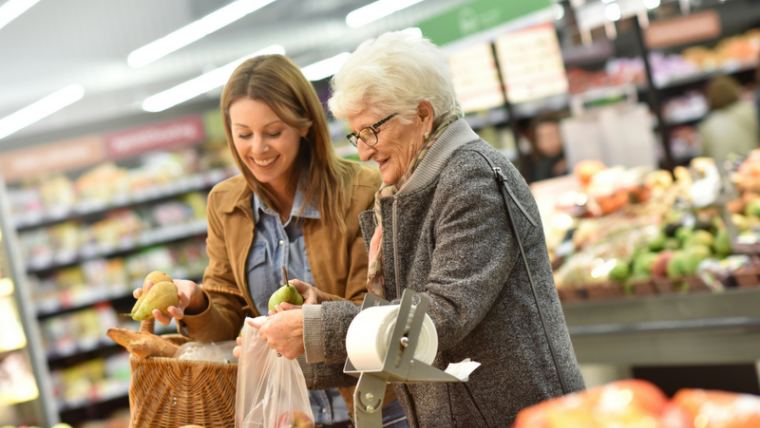Is Walmart now in the assisted living market?

ONE: The Alltech Ideas Conference (ONE17) in Lexington, Kentucky. With this being my fourth year in attendance, one might believe I’ve become a master at preparing for the event. Quite the opposite. Dr. Pearse Lyons, the mastermind behind Alltech, is intricately involved in all events. His mind is a constant place of creativeness, innovation and disruption. I’ve yet to experience an event that did not bypass my expectations. The best method of preparation is to enter with an open mind.

This year’s event challenged my open mind. It provoked my ideals and basic cognitive thinking. The concept of keeping agriculture real has been at the forefront of my life. In theory, the ideas presented at ONE17 were sound. I couldn’t help but wonder if some were feasible, practical and, well, real.
One such discussion centered around the grocery stores of tomorrow, or lack thereof. It is estimated that grocery stores as we know them today will soon become “daycare for the elderly.” One statistic went as far as to say box stores will be eliminated by 2028. Despite supporting research conducted by the United States Department of Labor through Willard Bishop, LLC., to say there was skepticism on my mind is an understatement. The research showed fewer Americans are buying food at grocery stores, especially younger consumers, leading to grocers becoming obsolete.
In theory, there may be truth in these statements; however, I wasn’t buying it.
Practically versus concept:
- Observation: I know a handful of decision-makers who have begun ordering groceries online. Regardless, the bulk of our family and friends continue to be drawn to the likes of Walmart or Target.
- Personal application: Living in a rural area, fresh produce isn’t available for shipping. Online shopping won’t be saving me fuel dollars until this service is offered. When I compare prices of Aldi to Amazon, my best buy is Aldi’s.
- Technical hindrances: There are both delivery and pickup methods offered by Walmart. In concept, my expectation was a great service. Eventually, they may hit the target. However, from my experience, numerous bugs need to be worked out. After spending hours trying to input my list, I ended up driving 30 minutes to purchase my items in person.
- Lack of convenience: Shipping and picking up groceries each come with a major shortcoming — today’s society needs an experience that is fast, convenient and easy. Anyone can enter a physical store without a list and walk out with $300 in items. Online ordering requires the time and patience to enter grocery items in an app or other device.
As these thoughts bounced through my mind, the presenter unexpectedly met my skepticism with additional points. I wasn’t yet committed to making a sale; however, I was listening.
Outside of online ordering, I was surprised to learn of the additional types of applications that are currently being applied and tested with real consumers:
- Amazon Go (unmanned store): Jackpot. No more worrying about ending up in the “talkers” check-out or being stuck in the line that never ends. In contrast, I couldn’t help but wonder if risk management challenges existed. What are the shoplifting rates?
- Egg vending machines: This portion of the presentation ended with the mention of Asian vending machines for eggs, fruits and perishables, a real-time service that has become as common as phone booths once were. While traveling, I have noted an increase in the variety of vending machines. During a San Francisco Uber ride, my husband and I struck up a conversation with the driver. Our moonlighting Uber driver held a daytime gig designing vending machines for perishable foods. The current project was a concept-phase fresh fruit, smoothie machine.
The older my mind becomes, the greater my stubbornness grows. I left ONE17 with the conclusion that while these concepts of the future sound dreamy, they won’t be practical nor will they replace big box stores.
Ding-dong. Two weeks following ONE17, I realized my conclusion, potentially, had some issues. In early June, Amazon announced its intention to purchase Whole Foods for $13.7 billion...in cash. I was quickly transported to last year during the holiday season. The historic holiday season set precedent, moving more sales transactions online than in the stores. The powerful retailer has the secret to closing big box stores, and it’s called Amazon Prime. It’s estimated that in the U.S., 60 million people are Prime members, and who tends to spend more on Amazon? Those Primers.
The “cha-ching” sound was echoing through my now open mind as I gave in to my stubbornness and acknowledged: big box stores may really become “assisted living” for our elderly, a place for social activity rather than a commerce center.












